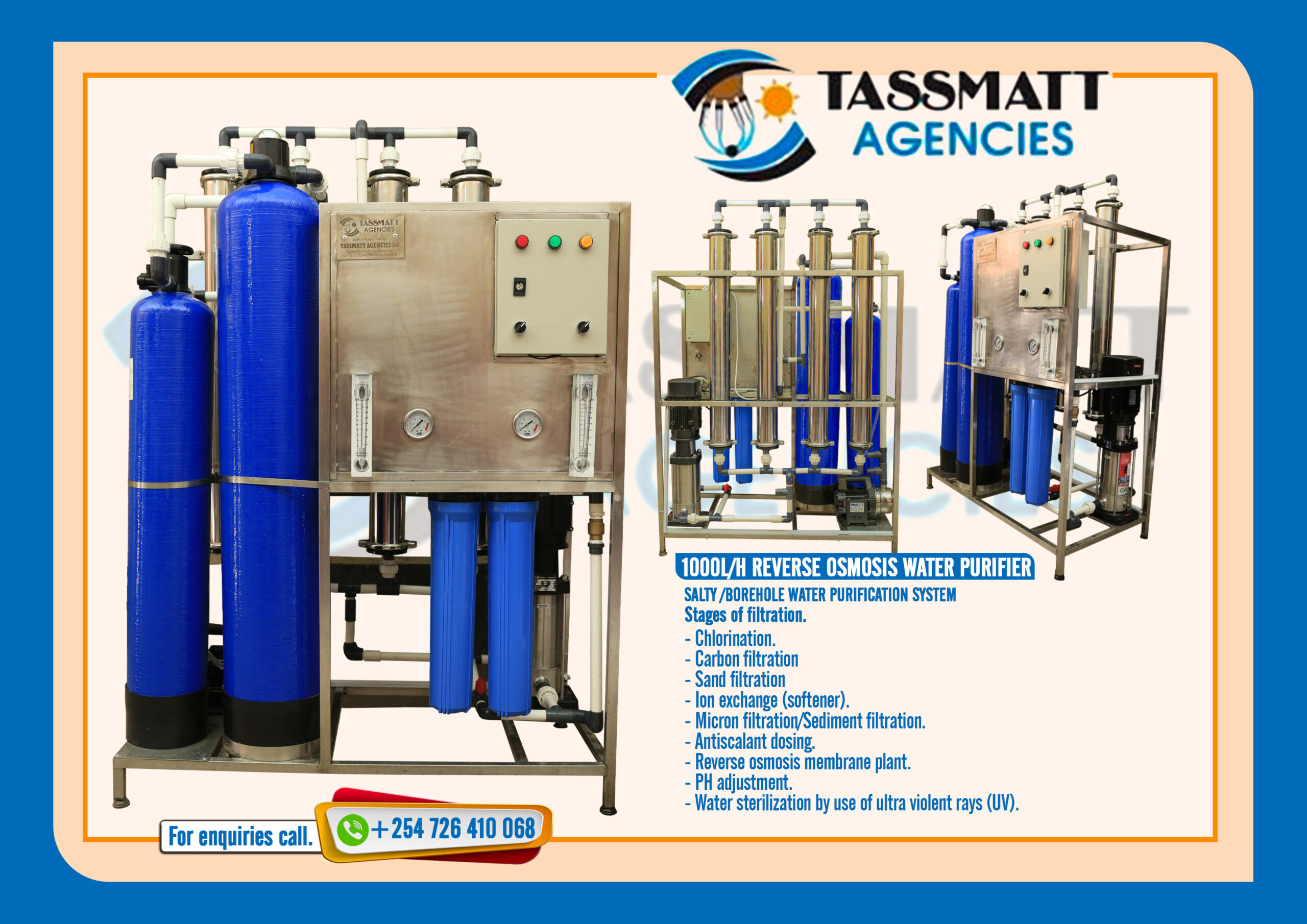Water Purification Systems: Water is one of the essential elements required for human life. Unfortunately, in many parts of the world, access to clean and safe water is still a major problem. In Kenya, access to safe drinking water is a significant concern, especially in rural areas. The lack of access to safe water has led to the spread of waterborne diseases, such as cholera, typhoid fever, and dysentery. As a result, the government and non-governmental organizations are investing in water purification systems to provide safe and clean water to communities. One of the most effective water purification systems is the 1000LPH water purification system, which we will discuss in this article.
What is a 1000LPH Water Purification System?
The 1000LPH water purification system is a state-of-the-art water purification system designed to remove impurities and contaminants from water. The system can purify up to 1000 liters of water per hour, making it suitable for use in large communities, schools, hospitals, and other institutions. The system uses various purification techniques, including sediment filtration, activated carbon filtration, reverse osmosis, and ultraviolet (UV) sterilization, to remove impurities from water.
How Does the 1000LPH Water Purification System Work?
The 1000LPH water purification system uses a multi-stage purification process to remove impurities from water. The first stage of the process is sediment filtration, where the water is passed through a sediment filter to remove large particles, such as sand, dirt, and rust. The second stage is activated carbon filtration, where the water is passed through an activated carbon filter to remove chlorine, pesticides, and other organic compounds that can cause an unpleasant taste and odor.
The third stage is reverse osmosis, where the water is passed through a semi-permeable membrane to remove dissolved solids, such as salts, minerals, and heavy metals. The fourth stage is ultraviolet (UV) sterilization, where the water is exposed to UV light to kill bacteria, viruses, and other microorganisms that can cause waterborne diseases.
The final stage of the process is post-treatment, where the purified water is passed through a post-treatment filter to remove any residual impurities and to improve its taste and odor.
Advantages of the 1000LPH Water Purification System:
- Provides Safe and Clean Drinking Water: The 1000LPH water purification system removes impurities and contaminants from water, providing safe and clean drinking water to communities.
- Cost-Effective: The 1000LPH water purification system is cost-effective in the long run, as it eliminates the need for purchasing bottled water.
- Easy to Maintain: The system is easy to maintain, and the replacement of filters and membranes is relatively simple.
- Durable: The system is made of high-quality materials, making it durable and long-lasting.
- Energy Efficient: The 1000LPH water purification system is energy-efficient, and it can operate using solar energy, making it ideal for areas with no access to electricity.
Conclusion:
Access to safe and clean water is a basic human right. The 1000LPH water purification system is an effective solution to the problem of water scarcity and waterborne diseases in Kenya. The system’s multi-stage purification process ensures that water is free of impurities and contaminants, providing safe and clean drinking water to communities. The system’s cost-effectiveness, ease of maintenance, durability, and energy efficiency make it an ideal solution for water purification in Kenya. Investing in water purification systems, such as the 1000LPH water purification system, is a step towards achieving the United Nations’ Sustainable Development Goals of ensuring access to safe and clean water for all.
